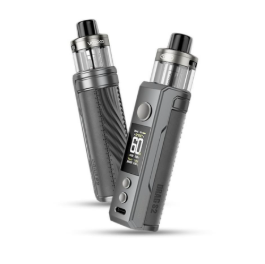Cost Comparison: Is a Home Urinal a Worthwhile Investment?
With the increasing popularity of home urinals, homeowners are weighing the benefits and costs to determine if this unique bathroom feature is worth the investment. A home urinal can offer significant advantages, from convenience and hygiene to water savings, especially for households with multiple users. However, installing one involves upfront expenses, ongoing maintenance, and potential renovations. This article will delve into the costs associated with home urinals and offer a comprehensive analysis to help you decide if a home urinal is the right choice for your household.
Initial Purchase Costs of Home Urinals
The first consideration in adding a home urinal is the upfront cost of the fixture itself. Home urinals range in price depending on the model, brand, and features:
Basic Models Basic wall-mounted ceramic urinals are typically the most affordable, ranging from $150 to $300. These models are functional but lack advanced features, making them a suitable choice for budget-conscious homeowners.
Mid-Range Models Mid-range urinals, which may offer slightly improved designs, materials, or features, cost around $300 to $600. These urinals often include more durable materials, water-saving options, or slightly more modern aesthetics.
High-End Models Premium urinals designed for luxury or high-traffic homes can cost anywhere from $600 to $1,200 or more. These high-end models might feature touchless flushing, sleek modern designs, or advanced water-saving technology.
The cost of a home urinal largely depends on individual preferences and the bathroom design style. It’s essential to select a model that suits your home and budget to get the best value for your investment.
Installation Costs
In addition to the price of the urinal, installation costs are a major factor in the total investment. Unless you have plumbing experience, professional installation is recommended to ensure proper setup and avoid costly repairs in the future. Installation costs may include:
Plumbing Setup Adding a new fixture often requires additional plumbing work, especially if it’s in a bathroom without an existing urinal connection. Basic installation can range from $300 to $700, depending on the complexity of the job.
Wall-Mounting and Adjustments For wall-mounted urinals, it may be necessary to reinforce the wall, especially if your bathroom walls are not initially designed to support a fixture. Reinforcements can add around $100 to $200 to the overall installation cost.
Permits and Compliance Depending on local regulations, you may need a permit to install new plumbing fixtures, particularly in a remodel. Permits typically cost around $50 to $150, depending on your location.
Combined, the installation costs can add up to $450 to $1,000 or more, depending on your bathroom’s layout and the complexity of the installation.
Maintenance Costs
While home urinals can be convenient, they do require maintenance to remain hygienic and functional. Fortunately, maintenance costs for urinals are generally minimal and may even be lower than those for standard toilets:
Cleaning Supplies Regular cleaning with mild soap or urinal-specific cleaning agents is necessary to prevent odors and staining. Monthly cleaning supplies are relatively inexpensive, usually around $5 to $10.
Flushing Mechanism Repairs Automatic flush mechanisms, common in high-end models, may need occasional repair or replacement. This could add $50 to $100 every few years, depending on the model’s durability.
Water Savings
One often-overlooked maintenance advantage is water efficiency, especially when paired with urinal splash guards to minimize water waste and maintain cleanliness. Urinals generally use significantly less water than toilets, especially if used frequently. A standard urinal flush uses around 0.5 gallons per flush, while standard toilets use up to 1.6 gallons per flush. This water savings can reduce your water bill by an estimated $20 to $50 annually, depending on usage.
Long-Term Benefits and Potential Savings
Though the upfront costs of purchasing and installing a home urinal might seem high, the long-term benefits can offset these expenses:
Water Conservation As mentioned earlier, water-saving urinals can lead to significant savings on water bills over time. For larger families or homes with multiple occupants, the water savings can quickly add up.
Convenience and Hygiene Urinals can enhance hygiene in shared bathrooms by reducing toilet seat splashes and spills. They also provide an added level of convenience for male users, especially in households with multiple family members.
Resale Value While adding a home urinal may not drastically increase property value, it can appeal to prospective buyers looking for a unique, modernized bathroom. This may add to your home’s overall appeal, especially in higher-end or urban markets.
Weighing the Pros and Cons of a Home Urinal
To determine if a home urinal is a worthwhile investment, consider the following factors:
Pros
Water Savings Reduced water usage can lead to noticeable savings on utility bills, particularly with water-efficient urinal models.
Convenience Provides a convenient alternative to standard toilets and reduces bathroom congestion in shared households.
Hygiene Helps minimize spills, making bathroom maintenance easier.
Cons
Initial and Installation Costs The initial expense for both purchase and installation can be substantial, especially for luxury models.
Space Requirement Home urinals require extra bathroom space and may not be practical for small bathrooms.
Ongoing Maintenance While maintenance is low-cost, it still requires regular cleaning to maintain hygiene.
Conclusion: Is a Home Urinal Right for You?
For those prioritizing water savings, convenience, and hygiene, a home urinal can be a valuable addition to the bathroom. However, the initial costs of purchasing and installing a home urinal, as well as the space it requires, should be considered carefully. If these upfront expenses fit within your budget and your bathroom layout can accommodate it, a home urinal can offer a unique blend of functionality, convenience, and long-term savings.














Post Comment